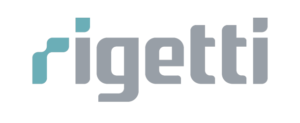By Dan O’Shea posted 05 Aug 2022
QLM Technology Ltd, a UK company that has developed a quantum-based Light Detection and Ranging (LiDAR) camera for sensing and measuring greenhouse gas emissions, announced it has raised £12,000,000 ($14.6 million) in Series A funding.
The financing comes as an increasing number of companies in the quantum sector are targeting climate change-related use cases. Pascal, for example, recently partnered with BASF with climate change in mind.
The company, which has headquarters in Cardiff, U.K., and operations in Bristol, U.K., and San Francisco, also said it had signed a collaboration agreement with Schlumberger, the global technology company serving the oil and gas industry, among others.
In fact, the funding round was led by Schlumberger Oilfield UK Limited, and included new investment from existing investors Green Angel Syndicate, Enterprise 100 Syndicate, the Development Bank of Wales, Newable, BritBots, and BPEC. Quantum Exponential Group plc also put out its own announcement acknowledging it invested £450,000 (almost $550,000) in QLM.
QLM said in a statement that its technology “can see and accurately quantify greenhouse gas emissions. The gas imager enables customers to monitor, detect and accurately locate and quantify Greenhouse Gas (GHG) emission sources for rapid repair. A related version of the product enables remote quantification of flare efficiency. QLM’s LiDAR technology is inherently scalable to low cost at high volume, enabling wide deployment.”
The partnership with Schlumberger will allow QLM’s technology to be integrated into the Schlumberger End-to-end Emissions Solutions (SEES) business offering for the oil and gas industry. SEES’s methane monitoring offering is based on previous investments in satellite-, airplane-, and drone-mounted sensors, along with additional sensors developed internally.
QLM’s LiDAR approach complements those mobile monitors by providing accurate and sensitive measurements where continuous monitoring is required, according to the statement, which added that the ability to quantify flare efficiency will ensure optimal efficiency for flares that cannot yet be eliminated.
“SEES selects partners following rigorous technical evaluation to identify innovative technology that complements our existing measurement solutions,” said Kahina Abdeli-Galinier, Emissions Business Director, Schlumberger. “The unique QLM LiDAR technology will allow operators to continuously monitor their facilities for methane emissions, and the technology is differentiated in its ability to detect even small emissions; to quantify emission rates accurately; to provide actionable information by locating the emission source precisely; and to fit upstream, midstream, and downstream facilities of all sizes.”
QLM’s technology also could be used for tracking and reducing methane emissions in other applications such as in biogas production, at landfills, at wastewater treatment plants, and in coal mines.
Quantum Exponential Group CEO Steven Metcalfe said of his firm’s investment in QLM, “With the events of COP-26, the UK’s goal of reaching net zero by 2050, and methane having more than 80 times the warming power of carbon dioxide over the first 20 years, this innovative technology couldn’t come at a better time. It will enable companies to quickly identify and stop any leaks, in a quicker and more reliable manner than the methods currently utilised and will assist organisations and governments to achieve the aim of reaching net zero.”
QLM last year raised £3.1m (€3.6 million) in a seed financing round.
Dan O’Shea has covered telecommunications and related topics including semiconductors, sensors, retail systems, digital payments and quantum computing/technology for over 25 years.













